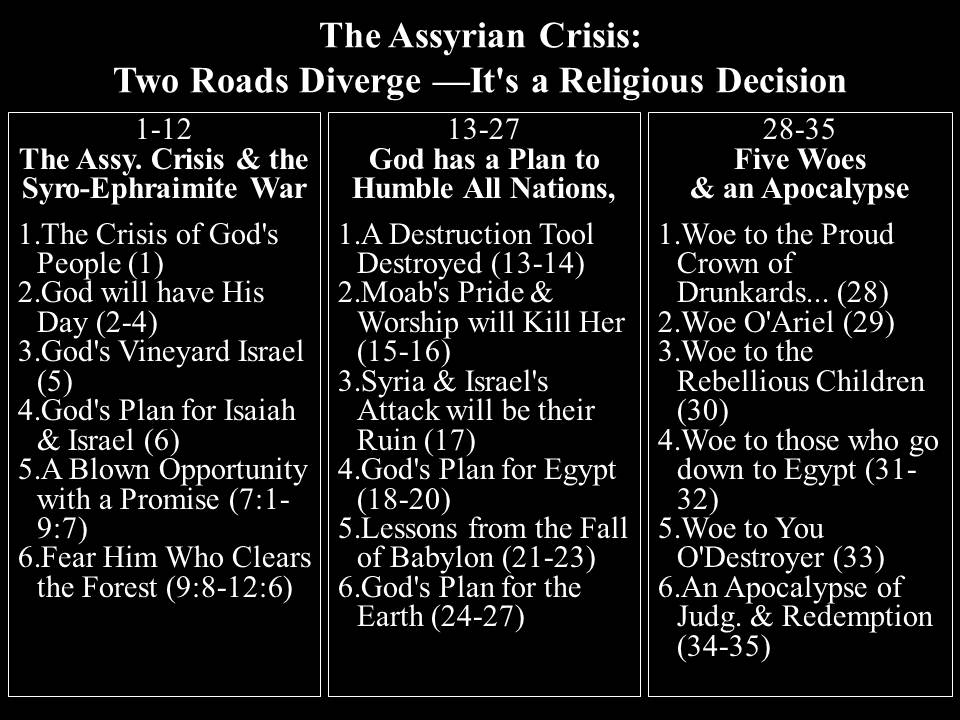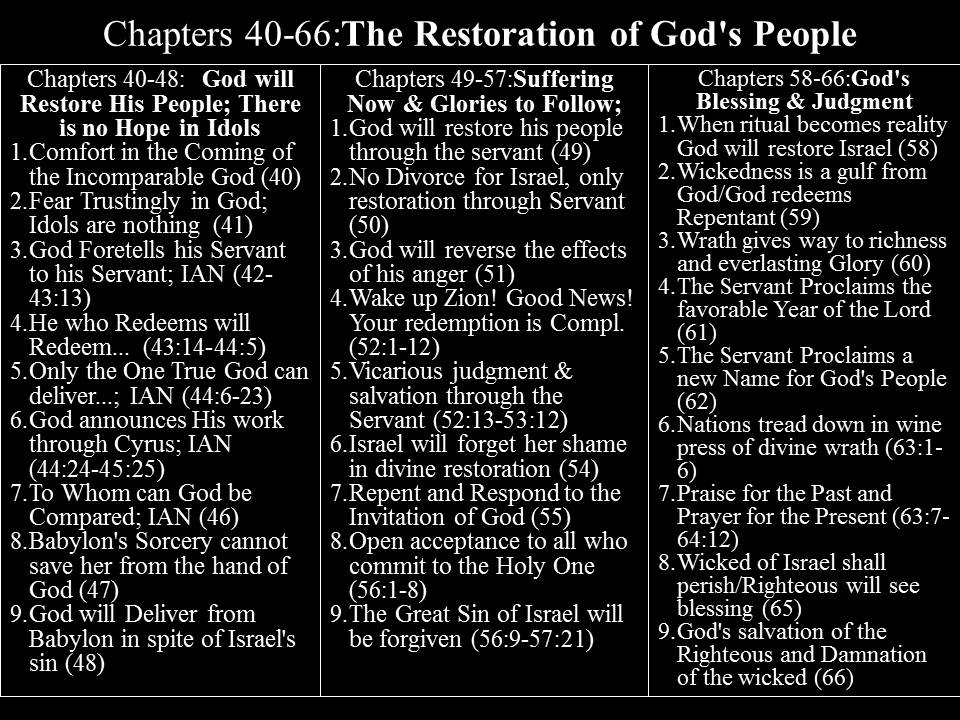Okay, so we’ve established that reading the books of the writing prophets is hard. They wrote in poetry; they make casual reference to cultural practices of which the modern reader is completely ignorant; they preach to their own people about events that are happening around them, without feeling the need to articulate exactly what those events are. In short, those guys were a pain. Unfortunately, they were also brilliant, insightful, and divinely empowered… so you kinda gotta read ‘em.
Another thing that makes these books hard to read for modern readers (Yes, I’m talking about you, your brother, and your dog, if he’s real smart and you’ve taken the time to teach him.) is the mental tension that exists between the “oracle” versus “the prophetic sermon.” People have a tendency to read these books in disconnected bits without paying attention to the natural literacy units that emerge from a careful investigation of the books themselves.
The first half of Isaiah is a kind of beautiful Frankenstein’s monster (Maybe bride of Frankenstein, she was kinda hot) where prophetic sermons are crafted out of “oracle moments” that may or may not have happened together.
Let me illustrate.
Isaiah 7:1-9:8 is a single prophetic sermon. It has three distinct pieces, however, with bits and pieces in it that “occurred” at different points in time. The whole things centers around the promise of the coming Son. This Son is an immediate sign… a time marker for the collapse of the Syro-Ephraimite coalition waging war against Faithless Ahaz. This “Son” turns out in Chapter 8 to be Isaiah’s own son born soon afterward to the Prophet. This “Son” morphs into the coming Son of David who will be a virgin born gift to those in darkness, taking up the throne of his father David as a kind of divine ruler in the world, establishing everlasting peace in the earth.
If one reads by “oracle” thinking, the link between the Son of David and the “virgin born” two year marker is lost… one is left scratching his head over Matthew’s use of this promise to speak of Jesus’ birth.
One might also consider Isaiah 28 in which Isaiah’s prophecy concerning the Northern Kingdoms’ soon to be dashed hopes of freeing themselves from Assyrian domination is used as an illustration for the Southern Kingdom rulers… the people he’s actually talking to. The “oracle” piecemeal approach misses the logic of the Prophets slide from one episode to another… all in one sermon.
For the sake of space, let me list the prophet sermons as I see them fleshing out in Isaiah.
Isaiah breaks into two main divisions with an historical bridge linking them theologically with two episodes in Judah’s history, which have been reversed in order to close the door theologically on the Assyrian Crisis in Division 1 (Isaiah 1-35) and to open the door theologically on the Babylonian Crisis in Division 2 (Isaiah 40-66). This crisis is an exile begun by Assyria in 722 BC and 701 BC will continue to spread as everything Hezekiah ever feared from Assyria is promised to come to pass through Babylon who Hezekiah has foolishly trusted to save him from Assyria in Isaiah 38-39. Wow, that was complicated wasn’t it?
The first division breaks into three sections. Each section contains 6 prophetic sermons. Here is my list. These are, again, patchwork sermons drawn from the years of Isaiah’s oral ministry.
The second division also breaks into three sections. Each section here, however, has 9 prophetic sermons. These are not patchworks, but form one huge discussion that was written to be read, sliding effortlessly from one discussion to the next. Here is my list.
Try reading each of these pieces independently, seeking sense sermon by sermon NOT oracle bit by oracle bit. Hope it helps.
Discover more from Biblical Literacy with Dr. Andrew D. Sargent
Subscribe to get the latest posts sent to your email.





